Review of Refurbished and Counterfeit WD Purple Hard Drives
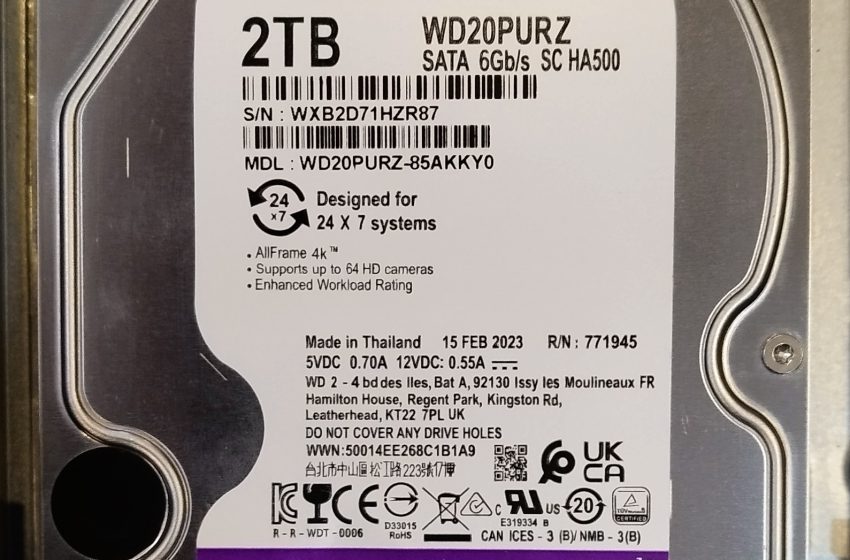
Update March 2024: It seems this topic is much deeper than it initially appeared—what English speakers would call “down the rabbit hole.” Read through the post first, and then check out the updates at the end.
WD Purple series hard drives, designed for video storage devices like DVRs and NVRs, are very popular in Iran. Unfortunately, because of economics problem in country, this popularity and needing for cheap hard drives, has also led to an influx of counterfeit products in the market.
If you’re currently looking for a hard drive for your DVR or NVR, chances are you’ll come across the WD Purple series is high and they are available in various capacities.
The problem starts when you search for a 1TB WD Purple hard drive and find prices ranging from 1.6 million to 3.4 million tomans online (as of 2024-12-30 it’s around $20 to $40 ). Why such a huge price difference? I once did some research on this, and I was told the cheaper ones are refurbished drives.
What does “refurbished” mean?
In short, it means the hard drive was repaired at the factory. When a hard drive has a defect, or even if it fails quality control during production, it’s repaired at the factory and resold. This isn’t inherently a problem, as the refurbished drive passes factory standards and is certified to work properly. The word “Refurbished” is typically labeled on the product, and these drives often come with warranties ranging from 6 months to 3 years. Note that brand-new drives come with a 3-years warranty. I read on Reddit that drives with minor issues like board or firmware problems are given a full 3-year warranty.
So far, no issues. The drive is repaired (either has hardware or software problem), tested, and certified by the factory. But the issue arises because Western Digital doesn’t have an official distributor in Iran because of sanctions, so most warranties are offered by local resellers. Moreover, many of the cheaper drives in Iran don’t even have the “Refurbished” label on them.
Years ago, this wasn’t a serious issue. Reputable warranty providers like AvaZhang, Saazgaar, or the newer ones like Haami would offer these drives with 2-3 years of warranty. If the drive failed, they’d replace it with a new one.
However, today, these two problems are interconnected. Let me explain. Hard drives have memory chips on their boards that store various types of data. The most important information for us includes the power-on count and total power-on hours. The screenshot below, taken from HDD Sentinel software, illustrates this data.
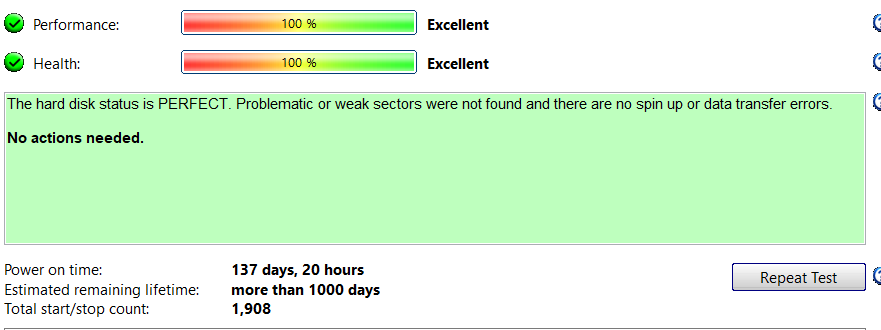
In HDD Sentinel, you can see that, for example, my hard drive has been on for a total of 137 days and 20 hours, and it has been powered on and off 1,908 times during this period. It’s said that hard drives have an average lifespan of about 40,000 hours. Of course, some last longer, but we’re speaking in general terms. Based on this, my hard drive has been used for approximately 3,300 hours and still has a long way to go before it’s likely to fail.
There’s a device called PC3000, which is used for hard drive recovery and repairs, and it costs around €13,000. Only a few people in Iran own this device. One of its capabilities is altering this type of data, such as changing a drive with 3,000 hours of usage to show just 10 hours of usage. In other words, they market the drive as “like new,” claiming the packaging has just been opened, and that’s it.
Until recently, I thought that only the PC3000 could modify these numbers. However, it turns out that even a simple Windows program on a laptop can change this information. I still don’t know the name of this program, but if anyone does, please let me know. Apparently, even HDD Sentinel itself might allow such edits, but the primary tool remains the PC3000. Those sellers who don’t have this device, don’t know how to use it, or find it too costly, often pay someone else to do it for them. As of March 2024, this service costs about 3,000 tomans per drive (as of 2024-12-30 it’s around $0.03 ). Additionally, the PC3000 can show whether this data has been altered in the past or not.
The Summary
In essence, some companies take second-hand hard drives, reset the usage stats, and use predictions from HDD Sentinel to offer warranties. For example, the software might say a drive has been powered on for 3,000 hours and will likely last another 3 years and 5 months. So, the company resets the drive stats and gives it a 3-year warranty. these companies origins are often unclear and might vanish and reappear under different names.
Beyond these practices, other issues like swapping labels or selling repaired drives as brand-new ones also occur.
The Solution
You have two options:
Toshiba S300 Drives: These drives are specifically designed for DVR and NVR systems, are cheaper, and there are fewer counterfeits in the market. You could consider using them.- Reputable Warranties: If you’re very cautious, according to Backblaze’s reports on hard drive failure rates in their data centers, Western Digital drives tend to fail less often. Look for “original warranties” from well-known companies like the ones mentioned earlier. Based on their reputation, we assume they are less likely to engage in such deceptive practices.
Update March 2024: It seems Toshiba hard drives are also being counterfeited. Here’s what’s happening: A company I haven’t identified yet, known as Al-Ettisal or PS, imports large quantities of refurbished and second-hand drives from Malaysia or Thailand. The minimum purchase requirement from this company is one billion tomans (as of 2024-12-30 it’s around $12000). A group of shop owners pools their money to buy Green drives and then provides their own warranties with new Purple labels. Even the so-called “official warranty” companies may buy from this company and sell the drives using the same methods. As a result, no matter which route you take, you’re likely to end up with a second-hand product.
Update Autumn 2024:
The sale of these fake drives continues strong, with no oversight to stop it. I’ve even heard reports of green drives being rebranded as red ones.
Here are a few observations:
- Authentic WD Drives: The cover or top plate of genuine WD drives features a hexagonal pattern. This detail is visible in all the photos below.
- Authentic Seagate Drives: The top plate has a circular and dent like design.
These patterns only indicate the manufacturer of the drive. For example, if a Seagate drive is labeled as a WD Purple, it’s definitely fake.
I previously mentioned resetting the usage stats on hard drives—this remains a common practice. The same applies to high-capacity drives. they change 1TB capacity to 2TB with PC3000. then as you put in in DVR or NVR it shows 2TB but when you want to show the playback it only recorded 1TB of footage, so it shows you like 7 days of footage and an average customer won’t notice that change. for example he thinks that 4 full-hd cameras with 2TB hard drive only record 7 days.
Lastly, all the warranties offered by these sellers lack proper company details such as addresses or phone numbers. This is yet another red flag.
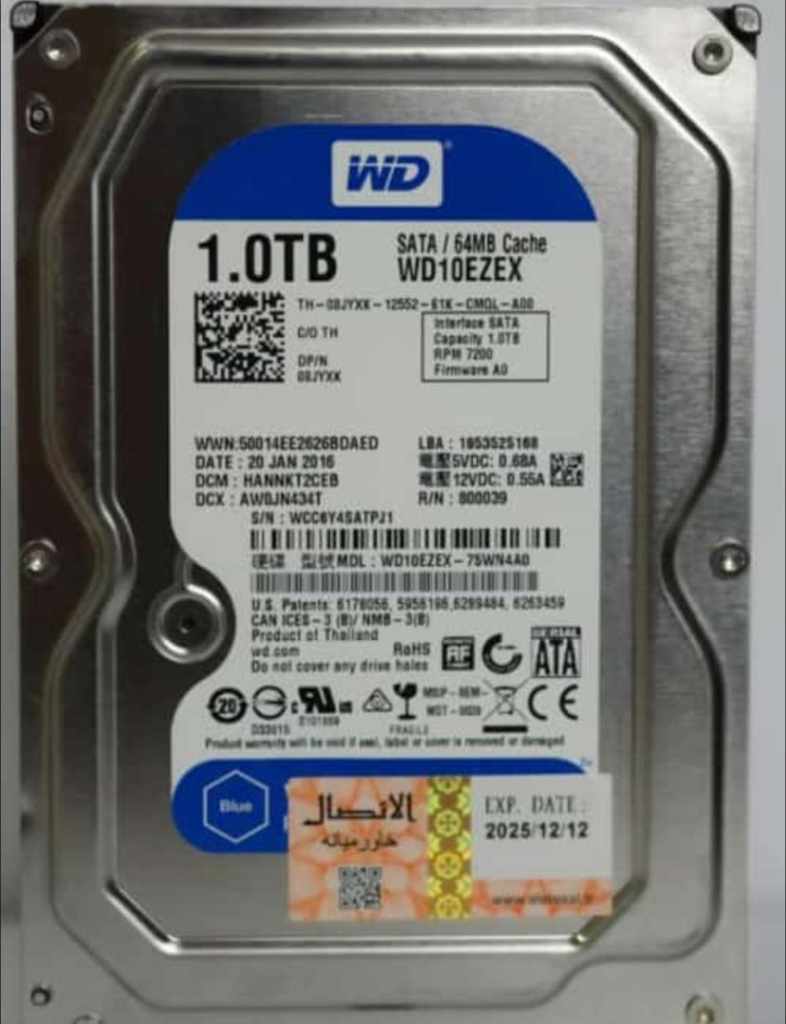

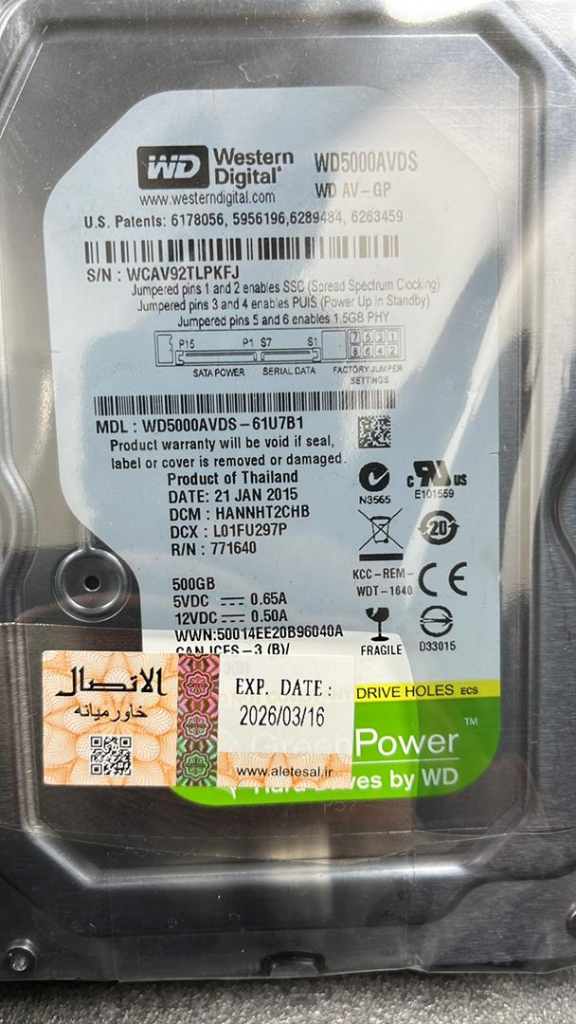

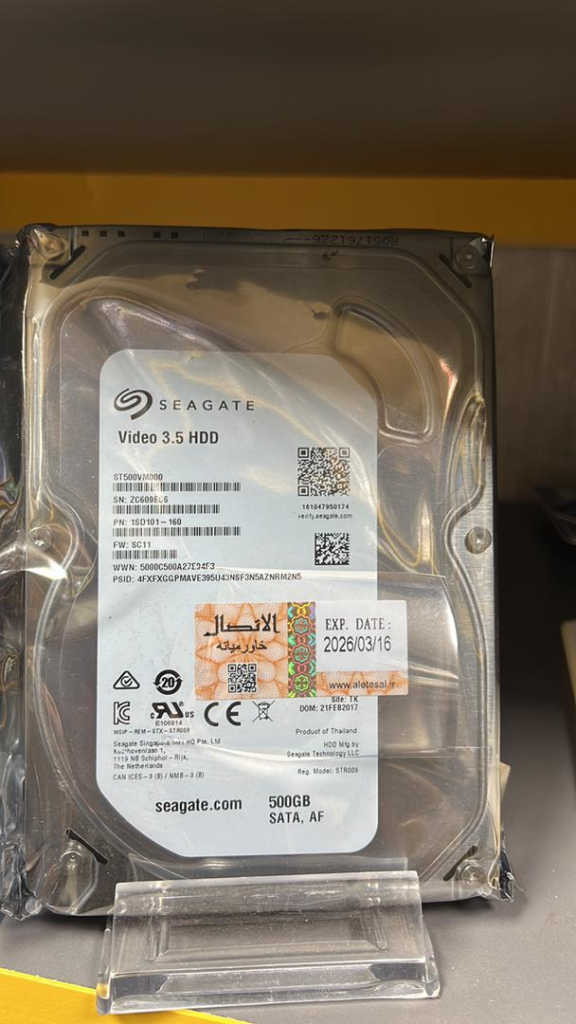
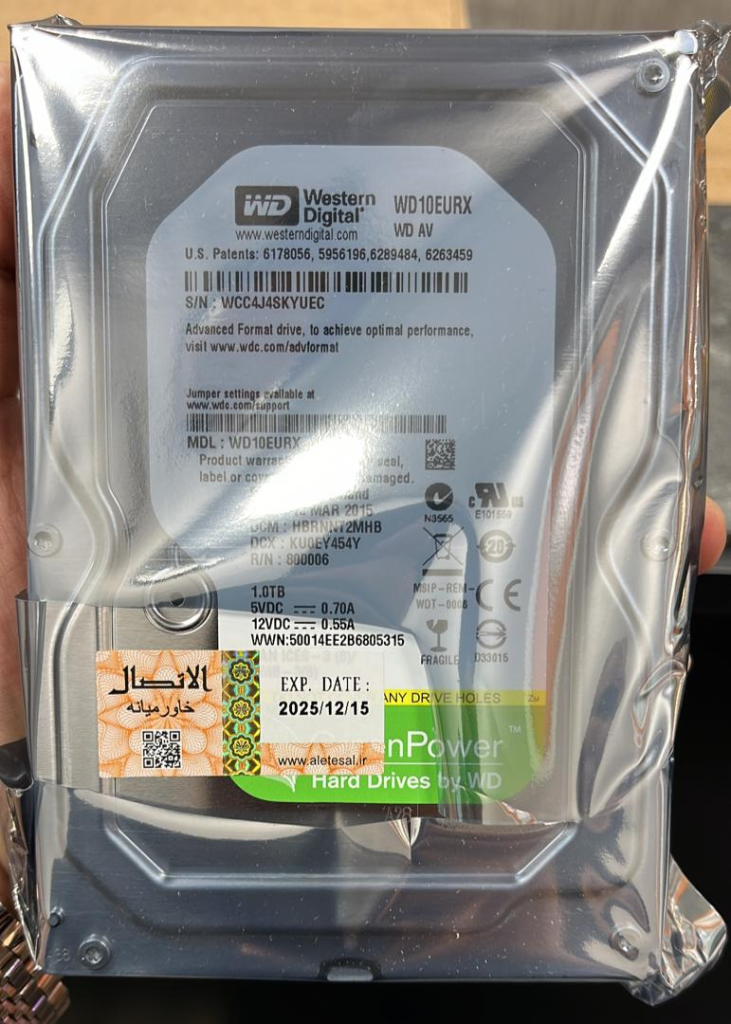
Update December 2024: The photos below are of genuine second-hand hard drives listed on eBay. Pay close attention to the design of the hard drive cover.
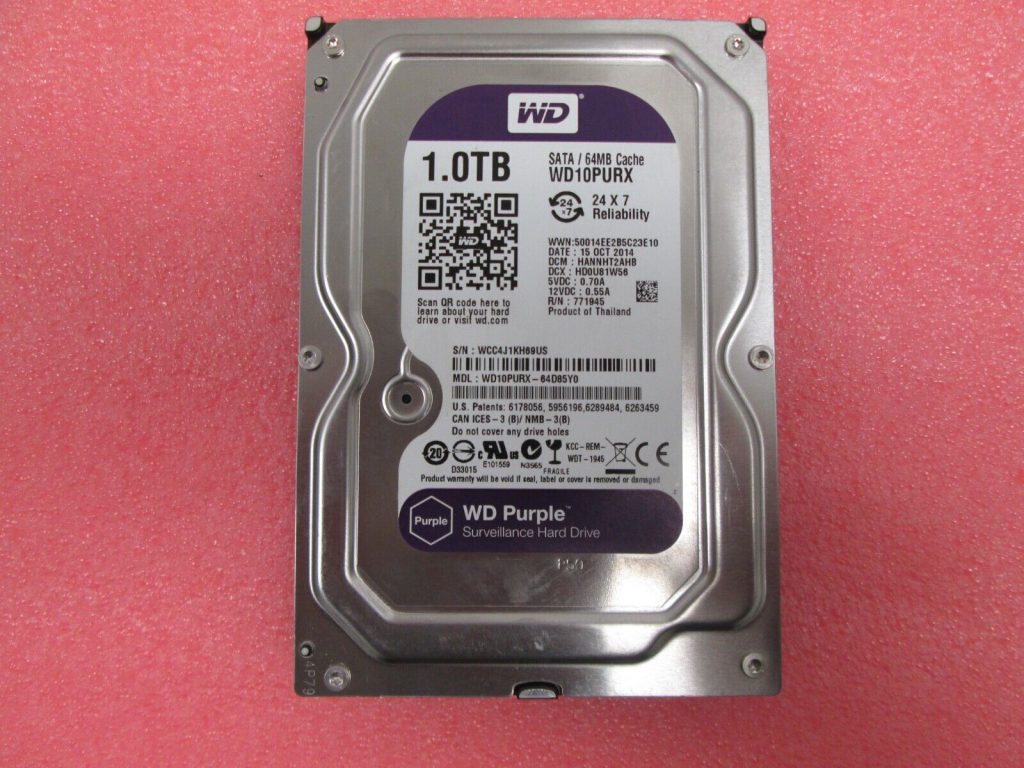
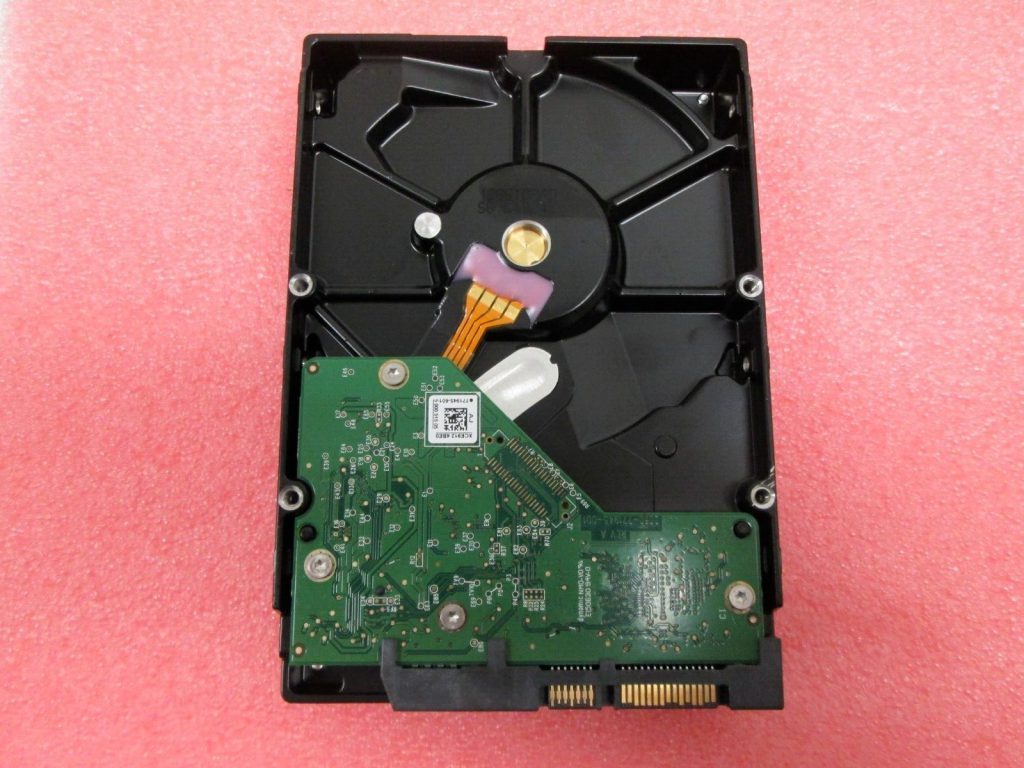
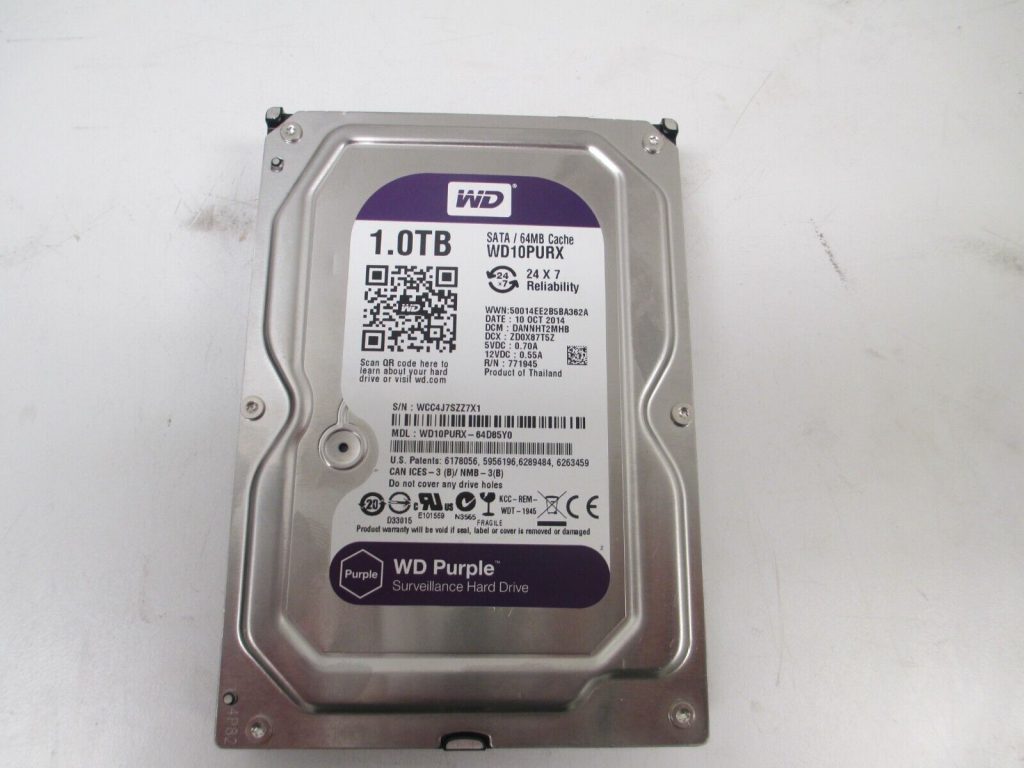
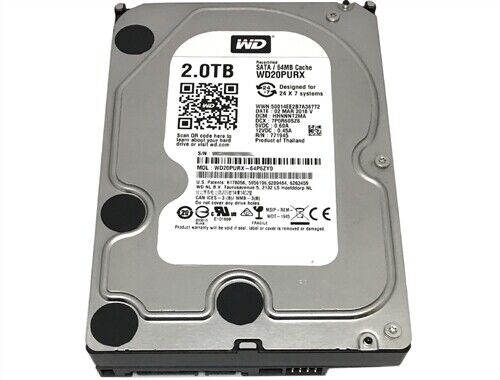

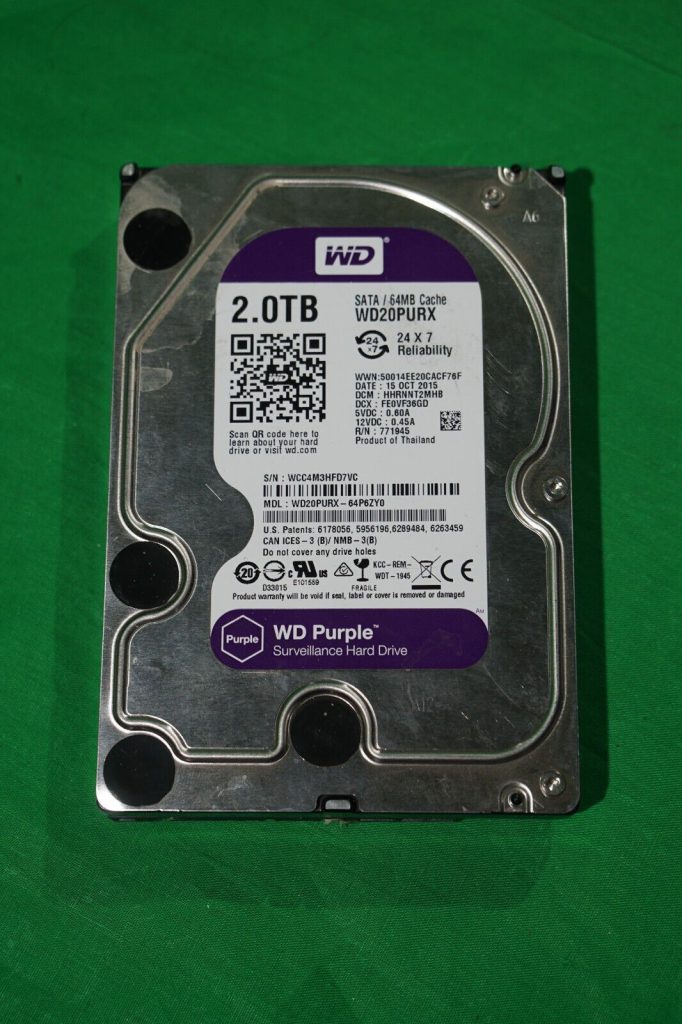
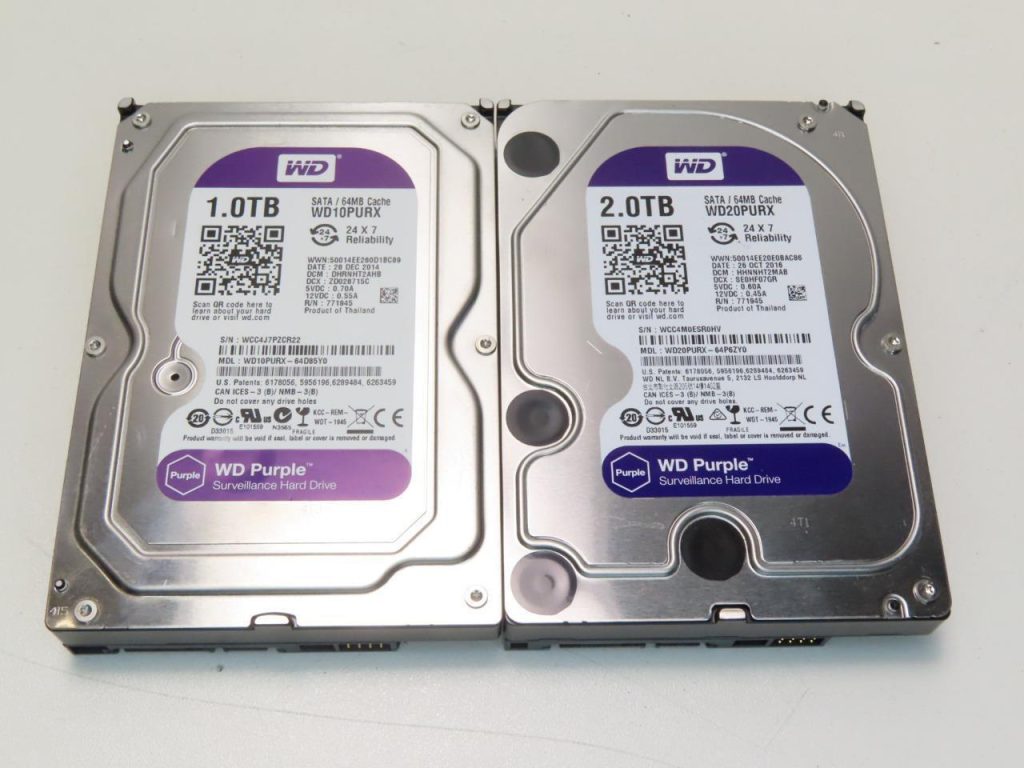
These are 1 and 2TB of Seagate and the cover shape
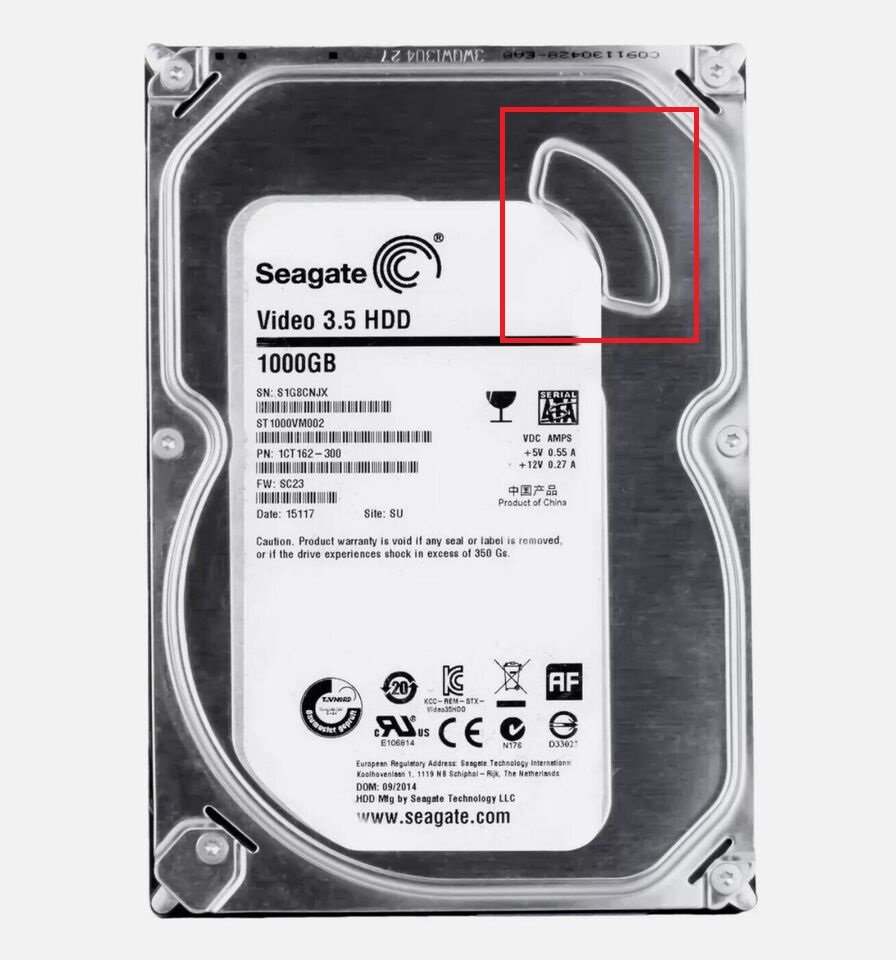
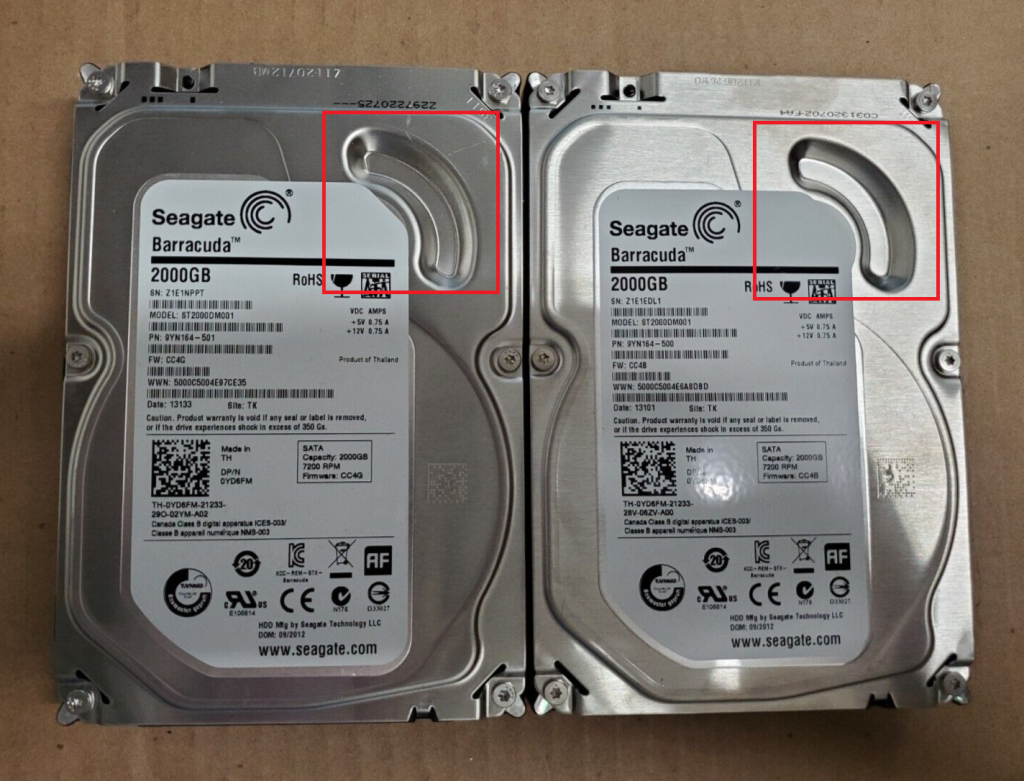
Now these hard drives below most likely are fake, they were either Green WD turned into purple WD or Seagate turned into Pruple. look at the them and find which is which:
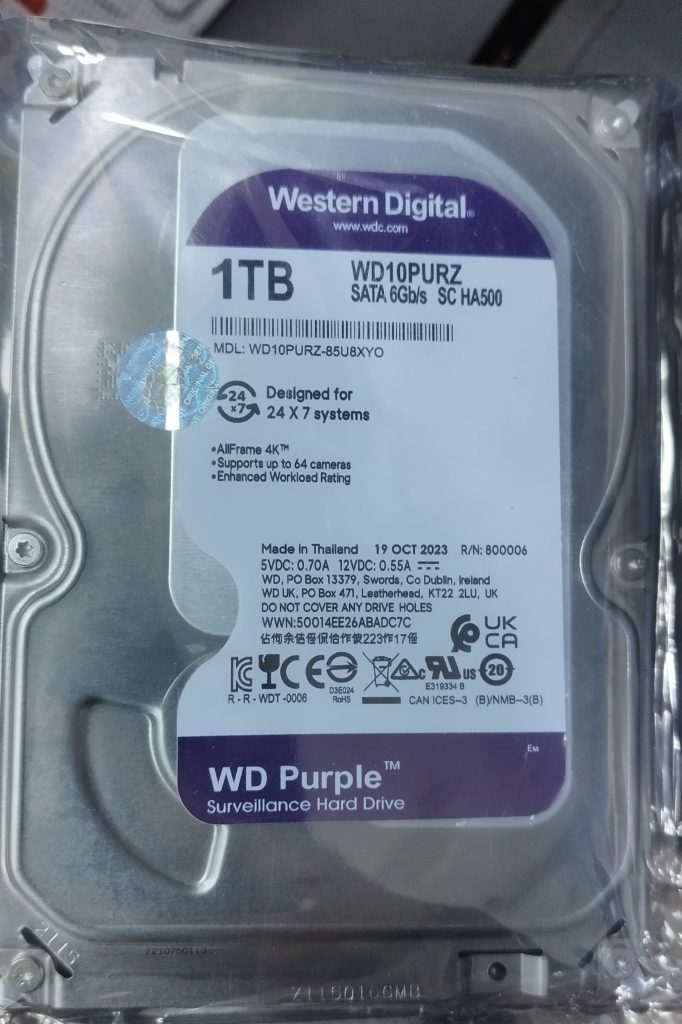
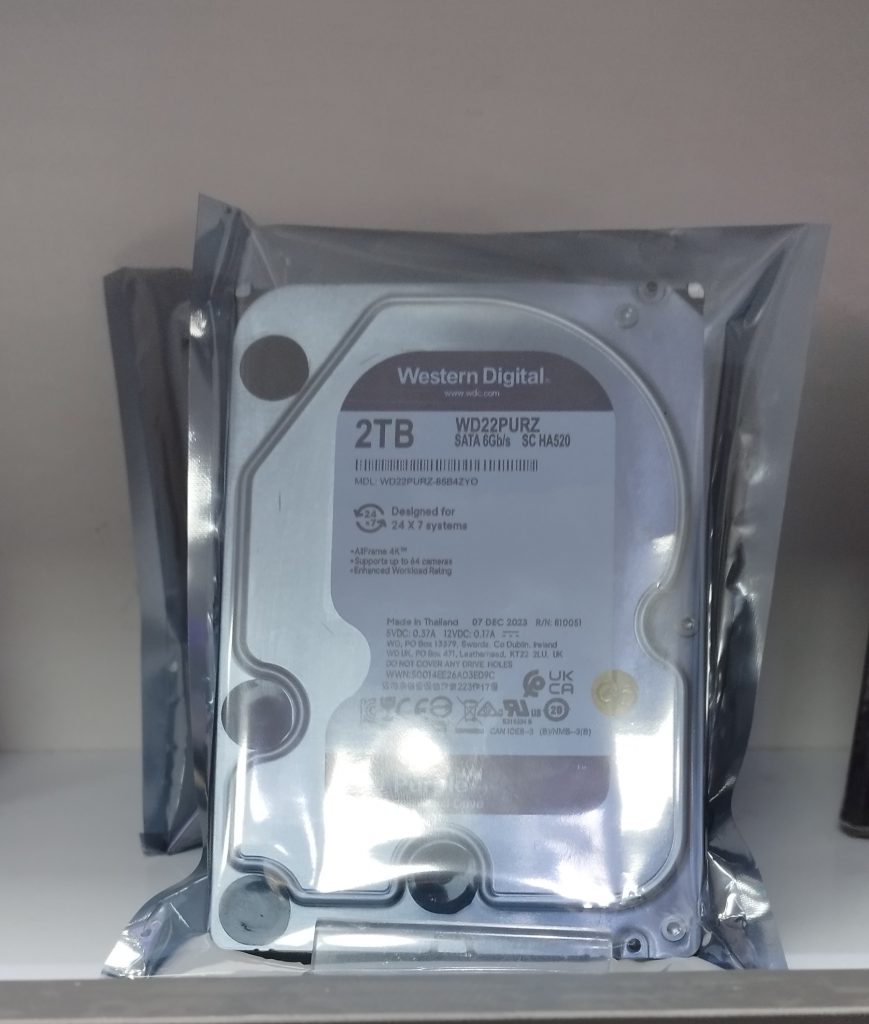
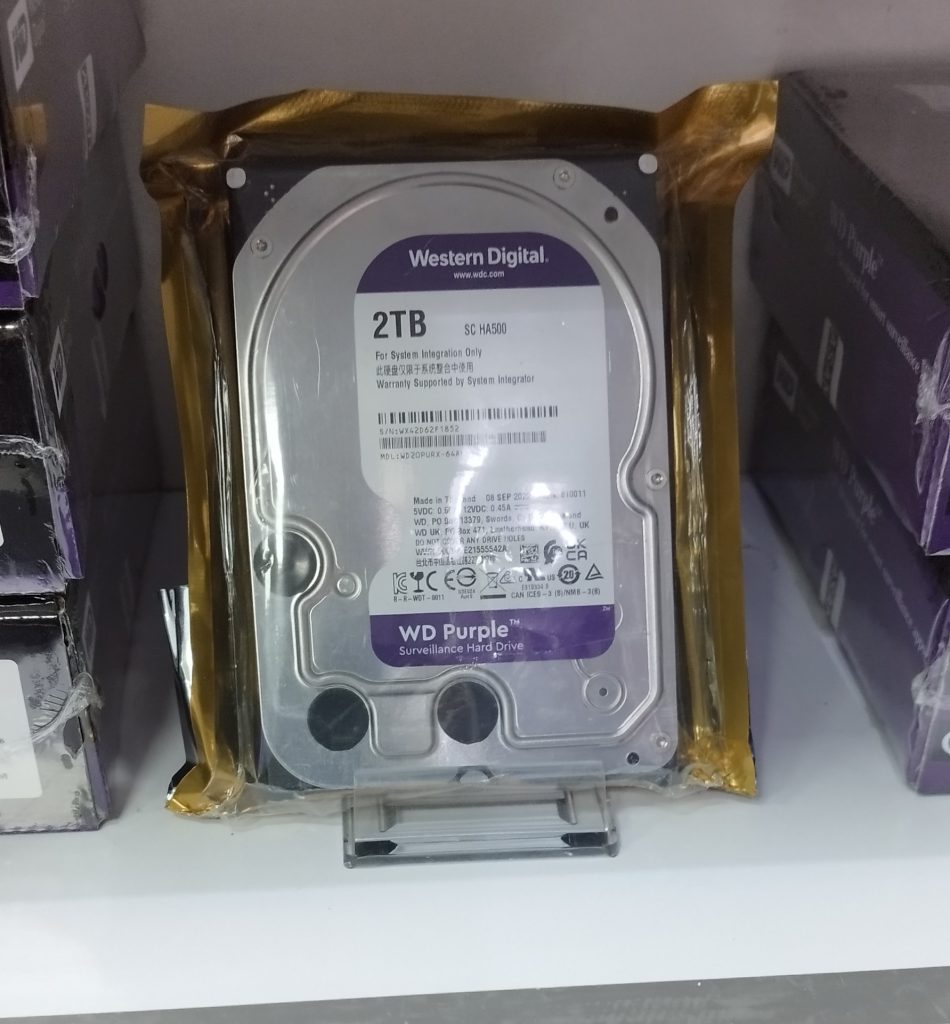
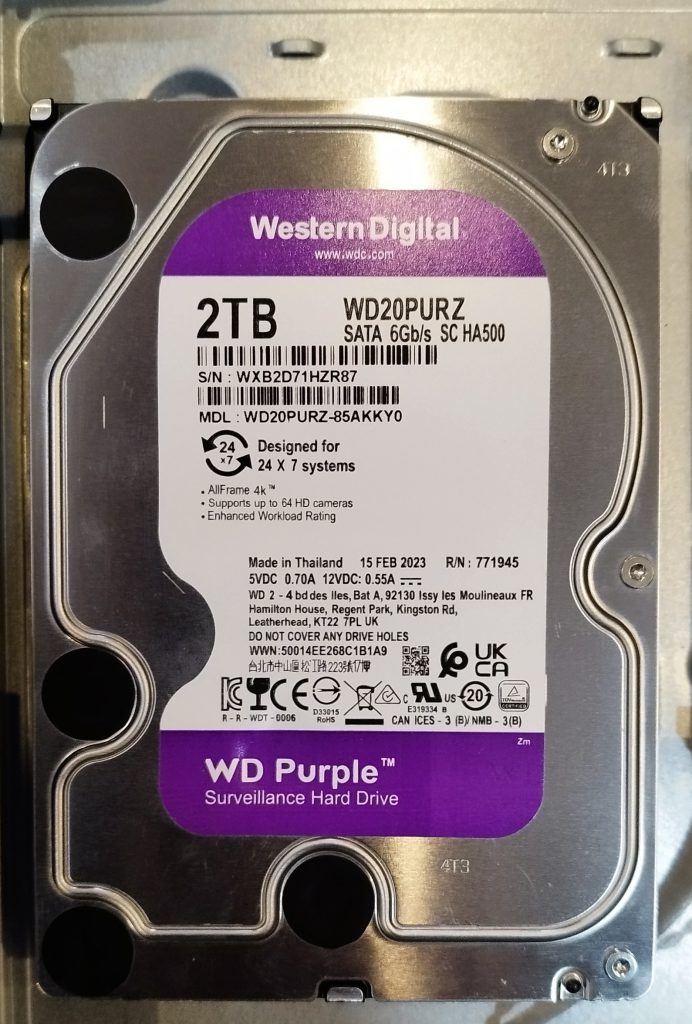
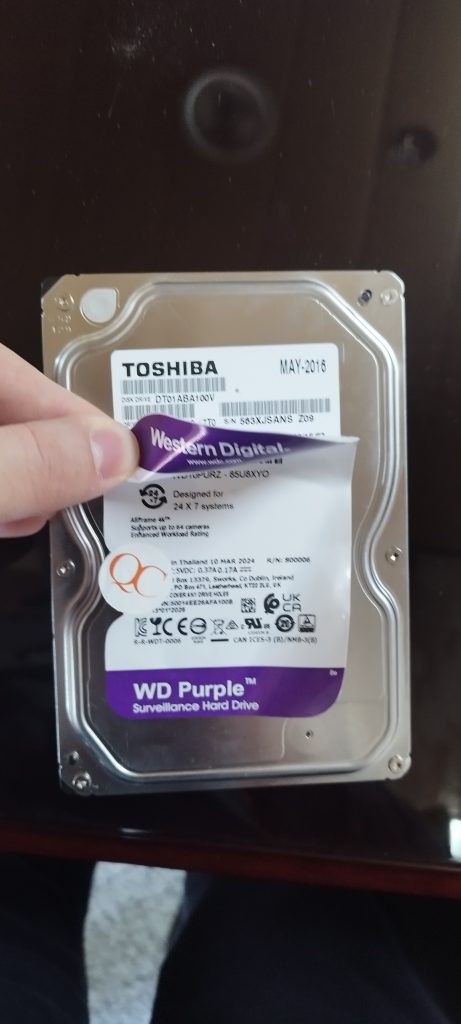
If you pay close attention, you’ll notice that each hard drive cover has a different design. I’m not exactly sure which ones are genuine and which are counterfeit, but a few things are clear:
- Drives without serial numbers are definitely fake.
- Even those with serial numbers aren’t guaranteed to be genuine, as the serial could have been copied from an original drive.
Another key detail: Hard drives have a small vent hole that allows air to flow inside, equipped with an air filter to prevent contaminants—this is sometimes referred to as the drive “breathing.” On the drive label, you’ll often see a warning that says, “Do Not Cover Any Holes.”
In the photos above, some drives have labels covering these holes, which makes them undoubtedly fake. Furthermore, all the drives shown above are fake because the design of the covers resembles Seagate drives rather than WD’s.